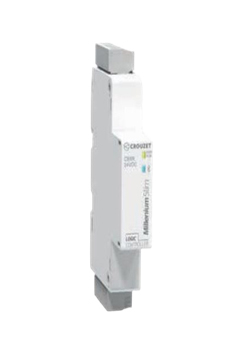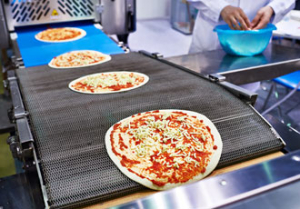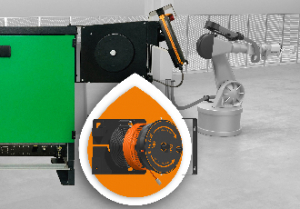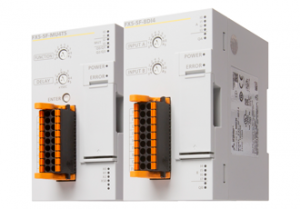Integrating Instrumentation Monitoring Increases Process Efficiency and Membrane Life in Reverse Osmosis Processes
20th August 2010
Source:
Burkert Fluid Control Systems

Scaling, fouling and oxidation are the natural enemies of reverse osmosis (RO) systems in water processing units—especially in the food and pharmaceutical industries. Proper process monitoring and control of critical parameters, such as pH, ORP, conductivity, flow, temperature and differential pressure can provide advanced warning and protection of a scaling, fouling or chemically attacked RO element. If these early warnings are ignored, the membrane may be damaged beyond the point that chemical cleaning can restore the system back to its original operating efficiency.
To produce high-purity water for food, pharmaceutical or laboratory purposes, the fluid has to undergo a complicated purification process. At the centre of this process is the reverse osmosis plant. Pre-treatment processes are essential in the plant to ensure that all oxidizing agents, organic or inorganic fouling contaminants and scale compounds are eliminated, or at least minimised in order to increase the systems total efficiency and lower overall operating costs. Preventing excessive build up of these contaminants can be accomplished with proper instrumentation and control processes set in place.
Individual measurements alone will not increase the cost efficiency of the reverse osmosis process, even though the latest two-in-one devices like the pH/ORP-transmitters/controllers create synergy on the measurement side. Only an efficient process control system that groups and regulates all parameters such as flow rate, temperature, pH/ORP, conductivity and pressure can produce real advantages in performance and efficiency.
A multifunctional control system, such as Bürkert’s multi-parameter controller mxControl 8620, automates the control of process variables in RO water treatment systems. In some cases the controller is able to reduce control and measuring instrumentation costs to almost half. Simple monitoring and control functions, as well as the gathering of data, are integrated into one compact and easily configurable control unit with its integrated display and five soft-touch keys for the setting and display of all important variables and parameters.
Through parameterisation of a number of control values, via an SD-card slot and a USB or Ethernet port, the 8620 is especially adapted for process monitoring and chemical control systems. An easily configurable PC-software helps adapt the controller to many types of process requirements and applications. Data such as flow rate, pressure, pH/ORP, conductivity, O2, Cl2, water level and temperature can be displayed, controlled, recorded and transmitted. The multi-parameter-controller can be connected to up to six analogue and eight digital inputs (four of which can be flow), such as conductivity, pH/ORP, temperature, pressure, etc. It features up to four analogue and nine digital outputs for a multitude of conditions from simply retransmitting a process value, to pulse or frequency dosing a metering pump. In addition, the controller can transmit analogue outputs from one of the eight PID control blocks.
An example of using the mxControl to determine a key parameter in RO system health is a Brackish Water system with a typical % recovery* of between 75%-85% If the 75%-85% value decreases during the course of the process, the control unit monitors and data logs every single parameter that is necessary for fault analysis. The initial focus is on pH, then on conductivity, temperature and pressure. If all parameters are within the control range, but performance of the membranes is still falling short of the nominal value, this may be due to a scaling or fouling event. This can also be quickly differentiated by appropriate monitoring points. If a higher pressure drop occurs at the first stage, the reason is most often due to colloidal or bio-fouling. A pressure drop increase at the second stage generally indicates an elevated mineral level or scaling has occurred. It is this ability to precisely track and log multiple process points simultaneously, that enables the mxControl to reduce costs and improve efficiency in reverse osmosis systems.
*(% Recovery: the relationship between total feed flow and product or permeate flow)
The mxControl process make sense for more complex RO-systems; however, a chemical pump combined with a compact pipe- mounted dynamic pH-transmitter/controller like Bürkert’s 8205, is sufficient for simpler RO-systems where only the feed water pH needs to be lowered.
In these applications the combination of ELEMENT transmitters that can transmit process values and temperature can also perform simple on/off control or alarm functions to reduce overall system costs.
The ELEMENT units are field- mounted devices that enable quick refitting and upgrading of simple RO-processes. Apart from measuring the conductivity, pH and ORP, the ELEMENT range of transmitters also have options that enable transmission and on/off control of temperature. The transmitters are programmed via a removable module that could be left with the unit if local display is required. If values deviate from the originally programmed set value, the transmitter triggers a transistor switch that opens or closes a valve or starts a pump allowing the influx of fresh water or chemicals to regulate the pH, conductivity, temperature or ORP.
Individual measurements alone will not increase the cost efficiency of the reverse osmosis process, even though the latest two-in-one devices like the pH/ORP-transmitters/controllers create synergy on the measurement side. Only an efficient process control system that groups and regulates all parameters such as flow rate, temperature, pH/ORP, conductivity and pressure can produce real advantages in performance and efficiency.
A multifunctional control system, such as Bürkert’s multi-parameter controller mxControl 8620, automates the control of process variables in RO water treatment systems. In some cases the controller is able to reduce control and measuring instrumentation costs to almost half. Simple monitoring and control functions, as well as the gathering of data, are integrated into one compact and easily configurable control unit with its integrated display and five soft-touch keys for the setting and display of all important variables and parameters.
Through parameterisation of a number of control values, via an SD-card slot and a USB or Ethernet port, the 8620 is especially adapted for process monitoring and chemical control systems. An easily configurable PC-software helps adapt the controller to many types of process requirements and applications. Data such as flow rate, pressure, pH/ORP, conductivity, O2, Cl2, water level and temperature can be displayed, controlled, recorded and transmitted. The multi-parameter-controller can be connected to up to six analogue and eight digital inputs (four of which can be flow), such as conductivity, pH/ORP, temperature, pressure, etc. It features up to four analogue and nine digital outputs for a multitude of conditions from simply retransmitting a process value, to pulse or frequency dosing a metering pump. In addition, the controller can transmit analogue outputs from one of the eight PID control blocks.
An example of using the mxControl to determine a key parameter in RO system health is a Brackish Water system with a typical % recovery* of between 75%-85% If the 75%-85% value decreases during the course of the process, the control unit monitors and data logs every single parameter that is necessary for fault analysis. The initial focus is on pH, then on conductivity, temperature and pressure. If all parameters are within the control range, but performance of the membranes is still falling short of the nominal value, this may be due to a scaling or fouling event. This can also be quickly differentiated by appropriate monitoring points. If a higher pressure drop occurs at the first stage, the reason is most often due to colloidal or bio-fouling. A pressure drop increase at the second stage generally indicates an elevated mineral level or scaling has occurred. It is this ability to precisely track and log multiple process points simultaneously, that enables the mxControl to reduce costs and improve efficiency in reverse osmosis systems.
*(% Recovery: the relationship between total feed flow and product or permeate flow)
The mxControl process make sense for more complex RO-systems; however, a chemical pump combined with a compact pipe- mounted dynamic pH-transmitter/controller like Bürkert’s 8205, is sufficient for simpler RO-systems where only the feed water pH needs to be lowered.
In these applications the combination of ELEMENT transmitters that can transmit process values and temperature can also perform simple on/off control or alarm functions to reduce overall system costs.
The ELEMENT units are field- mounted devices that enable quick refitting and upgrading of simple RO-processes. Apart from measuring the conductivity, pH and ORP, the ELEMENT range of transmitters also have options that enable transmission and on/off control of temperature. The transmitters are programmed via a removable module that could be left with the unit if local display is required. If values deviate from the originally programmed set value, the transmitter triggers a transistor switch that opens or closes a valve or starts a pump allowing the influx of fresh water or chemicals to regulate the pH, conductivity, temperature or ORP.
Similar articles
More from Burkert Fluid Control Systems
- Continuous water quality analysis for boreholes 6th July 2020
- Controller delivers precision microlitre dosing 14th May 2020
- Multi-medium testing facility for fluidic components 19th March 2020
- Micro precision for time-pressure dosing 10th December 2019












Write a comment
No comments